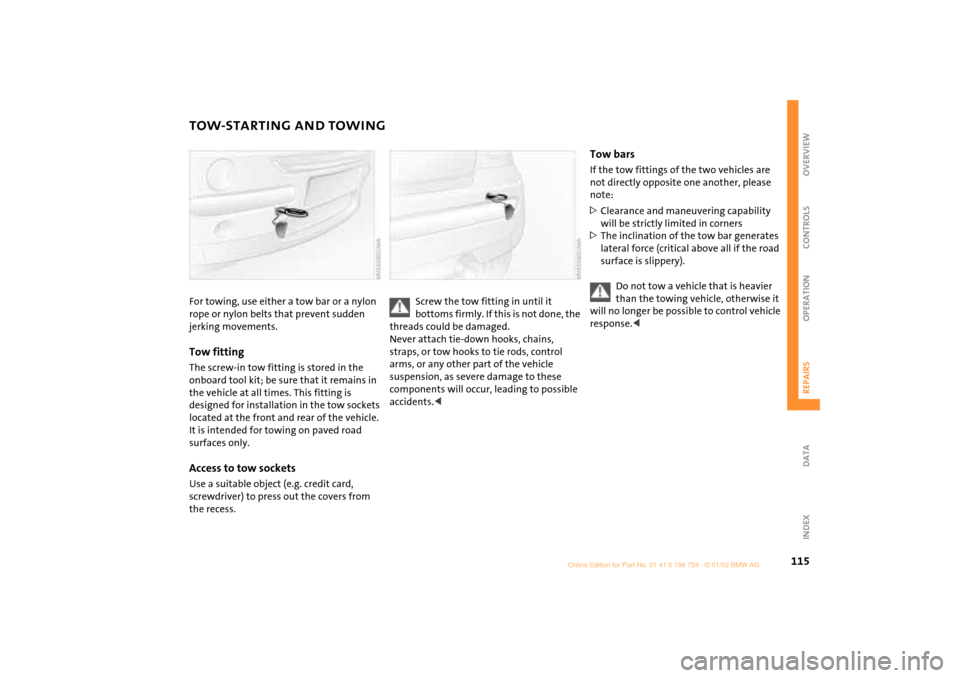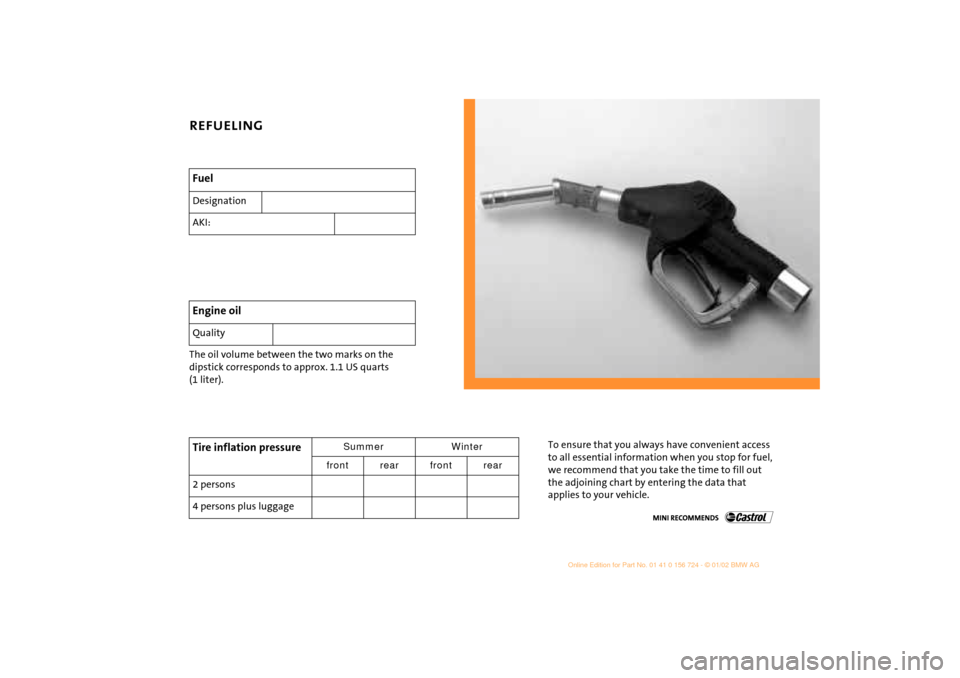115
OVERVIEW REPAIRSOPERATION CONTROLS DATA INDEX
TOW-STARTING AND TOWINGFor towing, use either a tow bar or a nylon
rope or nylon belts that prevent sudden
jerking movements.Tow fittingThe screw-in tow fitting is stored in the
onboard tool kit; be sure that it remains in
the vehicle at all times. This fitting is
designed for installation in the tow sockets
located at the front and rear of the vehicle.
It is intended for towing on paved road
surfaces only. Access to tow socketsUse a suitable object (e.g. credit card,
screwdriver) to press out the covers from
the recess.
Screw the tow fitting in until it
bottoms firmly. If this is not done, the
threads could be damaged.
Never attach tie-down hooks, chains,
straps, or tow hooks to tie rods, control
arms, or any other part of the vehicle
suspension, as severe damage to these
components will occur, leading to possible
accidents.<
Tow barsIf the tow fittings of the two vehicles are
not directly opposite one another, please
note:
>Clearance and maneuvering capability
will be strictly limited in corners
>The inclination of the tow bar generates
lateral force (critical above all if the road
surface is slippery).
Do not tow a vehicle that is heavier
than the towing vehicle, otherwise it
will no longer be possible to control vehicle
response.<
The oil volume between the two marks on the
dipstick corresponds to approx. 1.1 US quarts
(1 liter).FuelDesignation
AKI: Engine oil QualityTire inflation pressure
Summer Winter
front rear front rear
2 persons
4 persons plus luggage
To ensure that you always have convenient access
to all essential information when you stop for fuel,
we recommend that you take the time to fill out
the adjoining chart by entering the data that
applies to your vehicle.
REFUELING

